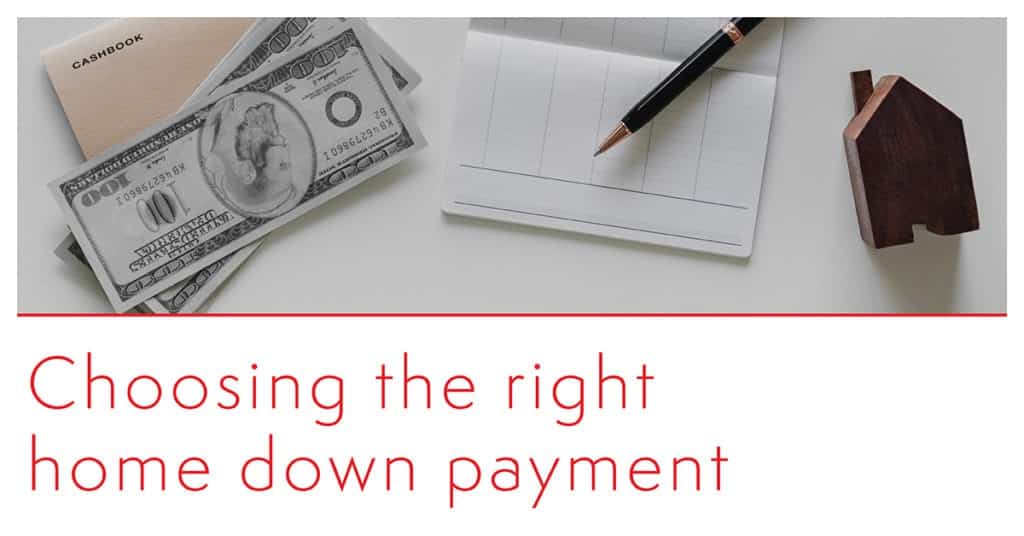Homebuyers get tons of advice when looking to buy a house. People want to voice opinions about location, interest rates, home inspections, and more. Down payment advice is something most potential buyers may want to pay attention to and investigate. This information is especially important for first-time buyers. How much money do buyers really need to make an offer? We shed some light on the subject below.
Standard Down Payments
Most people will say buyers need at least one-fifth of the home price upfront when looking to purchase. While this figure is a good number for most banks and lenders, private loans do not require as much money for the down payment. Some loan offices will agree to as little as three percent down, and for a select few qualified applicants, a no down payment option may be accessible. The applicant’s credit score, finances, current assets, and other information will be necessary to determine if the borrower qualifies for a more affordable down payment.
Options for Lower Upfront Home Fees
Credit scores are a big indicator of how much money a person must put down for a private mortgage loan. Lower down payments mean paying more money in other ways. Private mortgage insurance is one method of collecting regular payments without requiring a huge sum when closing. This coverage is useful for making sure the lender can recoup funds if the borrower does not make payments on time. Some loan types require one-time fees, monthly payments, or a combination of additional fees. Most single insurance payments are available for financing, but these means additional costs for buyers.
Conventional Mortgages
With these loans, a borrower can request removal of the private insurance once the buyer pays at least a fifth of the home equity. To get these loans or other private options, it may be necessary to show the lender an emergency fund for high-cost repairs like furnace replacements or roofing fixes. The more a person can pay down, the less the insurance payment, so each transaction is a matter of personal preference, credit, funds available, and lender terms. Overall, conventional loans are less expensive than FHA options, and buyers can talk with various lenders and compare prices.
U.S. Department of Agriculture Funding
USDA loans help people in rural areas achieve homeownership. Buyers can potentially get a zero down payment loan by selecting this avenue. These loans require a mortgage insurance premium or MIP. The figure is about two percent of the cost of the full loan value. It requires additional funding, so buyers will essentially pay two loan payments each month or a larger fee total. Besides the upfront costs that need offsetting, there is a monthly maintenance fee for the insurance amounting to about $35 per $100,000 on the loan.
Federal Housing Administration Loan Requirements
This funding option is like USDA loans, but there is more flexibility for borrowers. Shakier credit scores are acceptable in many cases. FHA loan down payments can be as little as three and a half percent. Just like USDA loans, these agreements require a 1.75 percent MIP which buyers can offset through payment arrangements with the lender. The monthly fee for this loan on top of the mortgage cost is more than double that of USDA loans. There is a loan type for FHA loans where the borrower can request additional funding for remodeling a property.
U.S. Department of Veterans Affairs Loans
Military veterans and families can get loans through the U.S. Department of the VA. Disabled vets do not have to pay the 2.15 upfront charge for the MIP, but good credit and total income factor into the decision. For non-disabled veterans, the mortgage insurance premium applies. U.S. News says this home buying option is beneficial for military members seeking home loans because the overall costs are much more affordable than conventional or FHA borrowing conditions.
Additional Costs May Apply
Experts in the real estate industry and financial sector advise home buyers to save up extra money for things like closing on the property and paying yearly taxes. By having home insurance payments for the year, the new buyer can keep monthly costs low and still afford the mortgage and mortgage insurance premium. The MIP is insurance for the lender and not the insurance a buyer purchases for the home. Maintenance funds and update savings are other things to save up for before applying for a home loan.
There are several options for buyers whether or not it is the first home. Improving credit scores and ensuring finances are stable are two things one can do to ensure a successful loan application. The more money one can save for the known costs and emergencies before asking for a loan, the better outcome for potential buyers.
Contact a realtor for more information.


